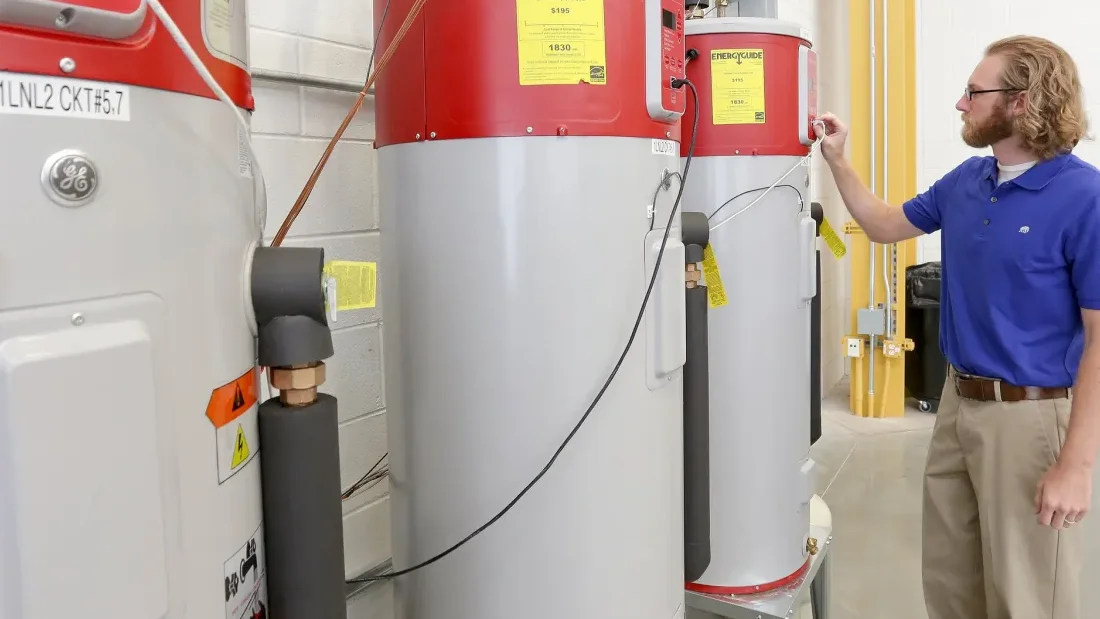
HEAT PUMPS: Maine has spent $135 million on heat pump incentives so far, with another $125 million expected in coming years, though none of the money has come from state tax revenue. (Portland Press Herald)
CLEAN ENERGY: The governor of Pennsylvania proposes redirecting $2.6 billion in unused tax credits to a new program to incentivize production of electricity that meets certain clean energy standards. (Spotlight PA)
OFFSHORE WIND:
WORKFORCE: A Philadelphia nonprofit trains people from low-income communities to work in clean energy trades. (Associated Press)
DECARBONIZATION:
SOLAR: The first commercial solar development in Erie County, Pennsylvania, is coming online this fall, leading the way for three more projects in the works. (Erie Times-News)
BUILDINGS: Building performance standards like those in place in New York City and Boston can help accelerate building decarbonization, according to a new road map from the Sustainable Markets Initiative. (Utility Dive)
HYDROPOWER: An environmental group offers to buy four hydropower dams on the Kennebec River in Maine with the goal of removing or modifying the structures to improve the river for Atlantic salmon. (Bangor Daily News, subscription)
EMISSIONS: Portland, Maine, explores ways to reduce the emissions of large cruise liners docked in port by strengthening transmission so ships can shut down engines and draw power from the grid. (Maine Public)
COMMENTARY: Maryland officials’ trip to Sweden offers valuable lessons in infrastructure development and the need for more education in the fight against climate change, writes the mayor of Annapolis. (Capital Gazette, subscription)
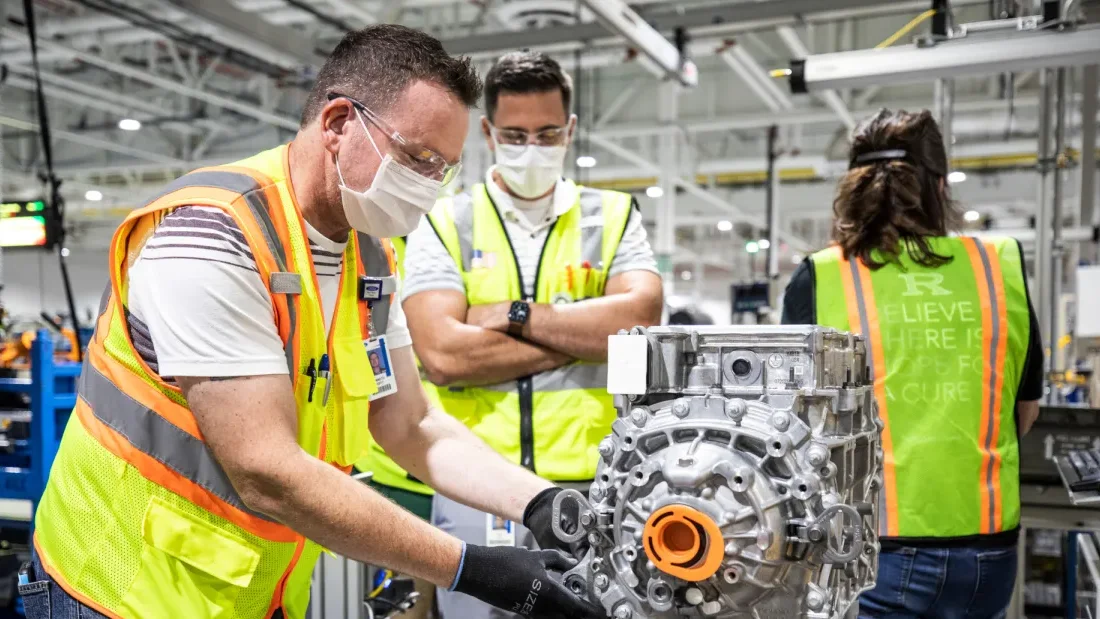
This story was originally published by Canary Media.
DETROIT—In 1913, Henry Ford unveiled the moving assembly line at his Highland Park plant, reducing the time it took to make a Model T from 12 hours to 93 minutes and igniting a revolution in modern manufacturing. He later perfected the intricate choreography of worker and machine at the 600-acre Rouge plant, which opened in 1920.
On a sunny late-summer afternoon, I stood on a catwalk at the Rouge, peering down at the modern incarnation of that century-old industrial system. Half-built F-150 pickups rolled from station to station at four miles per hour. Each employee had about 45 seconds to perform their task — install a center console, affix a windshield, hook up the truck-bed door.
Ford’s industrial efficiency helped convert America, and eventually much of the world, to automotive transportation, and his factories attracted thousands of workers to Detroit. By the 1920s, it was the nation’s fourth largest city; in 1950 its population peaked at nearly 2 million. Early-20th-century Ford Motor Company casts a mythic aura over Detroit to this day.
“We’re steeped in our heritage,” said Liesl Clark, an architect of Michigan climate policy who now teaches at the University of Michigan in Ann Arbor. “We think a lot about being the state that put the world on wheels. We take a lot of pride in that.”
But Detroit’s industrial joyride hit speed bumps in the second half of the 20th century as the auto industry grappled with technological change, globalization, automation, and supply chains shifting south, Jonathan Smith, senior chief deputy director at the state Department of Labor and Economic Opportunity, told me. As the jobs disappeared, Detroit’s population began emptying out; last year, it stood at just 633,218.
Now something new is stirring along the banks of the Detroit River. The city just notched its first year of population growth since 1957. A few buildings over from the clockwork marvel of Ford’s F-150 plant, another operation cranks out the electric version of the truck, loaded with a battery pack so powerful it can run a whole home. Farther afield, nascent battery plants are in the works, aiming to supply the Big Three automakers with American-made components for their emerging EV lineups.
Gov. Gretchen Whitmer, a Democrat elected in 2018, has launched an ambitious effort to reinvigorate Michigan’s remaining industrial base by retooling it for the low-carbon era. Crucially, Whitmer led her party to win majorities in the House and Senate in 2022, giving Democrats full control of state government for the first time in nearly 40 years. They used that popular mandate to pass a series of climate laws last fall, including one of the nation’s most ambitious clean electricity targets. Whitmer has directed hundreds of millions of dollars in state funds to a slew of cleantech factories where workers will make batteries for electric vehicles and new technologies to clean up buildings and electricity production.
Michigan is not the only state actively pursuing new factory investment; its efforts coincide with a generational shift in the nation’s capital, where politicians of both parties are disavowing neoliberal offshoring and embracing policies intended to bring manufacturing back to American shores. President Joe Biden’s signature climate law, the Inflation Reduction Act, incentivizes domestic production of electric vehicles and other energy technologies. But given its industrial legacy and highly trained workforce, Michigan is arguably the state best positioned to make the most of this new economic era.
“It was hard to find a lot of benefit for Michigan workers in … the globalization of some of these key industries, whereas Michigan workers absolutely can benefit from the reshoring and onshoring of existing critical technologies and new technologies of the future that there’s now a policy commitment to see built here in the United States,” Smith told me.
If Michigan’s bet on new clean energy manufacturing works out, it would offer the clearest test case nationally of the Biden-Harris strategy to make clean energy the engine of manufacturing revival. Of the top five states leading the climatetech factory buildout, per a tally by researcher Jack Conness, it’s the only one with unified state Democratic control, not to mention a strong and historically powerful union presence.
“Michigan’s package [of climate legislation] is really significant because it’s in a manufacturing state, it’s in a state where we understand industry,” said Clark, who previously ran Michigan’s environmental regulatory body for Whitmer. “We know we’re going to have to squeeze all the carbon we can out of industry, and we’re going to do that in a partnership with industry, so that we’re also getting the economic-development advantage as we’re moving along that road.”
At the same time, Michigan is one of the most closely divided swing states likely to decide the election between Vice President Kamala Harris, who vows to continue the clean energy policies she helped pass, and former President Donald Trump, who has threatened to undo them.
Michigan broke for Trump in 2016 by around 11,000 votes, part of the shattered “blue wall” that ushered him into the White House. In 2020, Michigan rejected Trump by 150,000 votes. Harris and Trump were neck and neck in the state’s September polling. Democrats may be ascendant in Lansing, but among the waterfront palaces of Grosse Pointe and the lakeside cornfields of the Thumb, the Trump-Vance signs come out in force.
I wanted to assess just how far Michigan’s clean energy manufacturing transformation has come ahead of the 2024 election. After a week of factory visits and interviews with business leaders and policymakers, it was clear that this revolution is further along in Michigan than almost anywhere else in the U.S. It’s also barely getting started.
Private companies have pledged more than $11 billion to build clean energy factories and projects in Michigan, by Conness’ count. Advocacy group Climate Power tallies more like $18 billion for cleantech factories, not counting clean power-plant commitments — money that’s expected to produce nearly 22,000 jobs.
But many of the big-ticket factories announced so far have yet to break ground. Michiganders are feeling only a fraction of the benefits the clean manufacturing boom could furnish; the full effects won’t come until long after the 2024 election is decided. That delay could jeopardize the whole project. For this battery-powered economic revival to succeed, the supporting policies that kicked it off need to stay on the books.
Detroit emanates from its namesake river like half a wheel, spokes flaring from the cluster of art deco skyscrapers at its center. I followed one of those spokes west past Dearborn, home to Ford and now a thriving Yemeni community, to a flat green land dotted by factories that look like oversized boxes. One of the largest of these houses Our Next Energy, a startup founded in 2020 by materials scientist Mujeeb Ijaz to bring back domestic production of the lithium ferrous phosphate (LFP) battery chemistry.
This technology uses cheaper, more widely accessible materials and operates more safely than the nickel-based battery chemistries that have reigned in the EV market. But the first major U.S. company to commercialize it, A123 Systems, went bankrupt more than a decade ago when, among other setbacks, actual demand for EV batteries lagged behind industry hopes. A123 was ultimately sold to a Chinese firm, and several Chinese companies successfully scaled up LFP production, making it a viable choice for EV batteries even though it lacks the cell-level energy density of the nickel chemistries. Ijaz saw this unfold firsthand while leading vehicle battery development for A123. Years later, he thought the time was ripe to try again.
It took me a few tries to find the right door at Our Next Energy’s enormous complex. Once inside, an operations manager for the plant had me cover up my hair, don a dark blue lab coat, and slip on little coverups for my leather shoes. Just before we walked onto the factory floor, he instructed me to tell him if I felt dehydrated, because we were entering a controlled zone of near-zero humidity.
Our first stop was the anode room, where Our Next Energy makes the negative end of the battery. Inside a tall, shiny, 100-liter metal tank, a dough hook mixes a sludge of gray metal powder; a separate machine extrudes this graphite slurry onto a roll of copper, printing an anode.
A parallel system across the room does the same for the lithium iron phosphate cathode, which goes on aluminum foil. Both the anodes and the cathodes then go through an oven that solidifies and dehydrates them, after which they’re sliced into uniform sheets. Then comes assembly: An automated machine stacks alternating sheets of anode and cathode with a separator weaving in between. The resulting stack gets stuffed into a metal box and filled with a liquid electrolyte. After some quality checks, it’s ready to power a car.
And that’s where the tour ended. The 10 megawatt-hour “proto line” I saw was fine-tuning samples for potential customers; it occupied a mere corner of the 660,000-square-foot factory, which sat mostly empty.
The mini-factory proves that American workers are capable of producing the up-and-coming LFP batteries. But the battery market, like the solar-panel market, is all about scale, and that’s what Our Next Energy currently lacks.
The company has suffered a series of recent financial setbacks. It went out for Series C venture funding last year, but couldn’t close the deal (that was a tough time for climate venture capital broadly). To keep things running, management laid off 128 staff in November, roughly 25 percent of the workforce. In December, the board booted founder Ijaz from the CEO spot (but kept him around as chief technology officer) and replaced him with board member Paul Humphries, who held multiple executive roles at Flex, the global manufacturing specialist.
Earlier this year, Humphries fired more staff and convinced existing investors to fund the company’s operations through the end of this year. That pushed off the startup’s nagging existential questions for a while.
After the factory tour, I drove half an hour to the small city of Novi to visit Our Next Energy’s corporate headquarters, a glassy, open-floor-plan affair tucked into the wooded, pond-dotted Michigan landscape. Head of Strategy Deeana Ahmed acknowledged the company’s financial challenges and laid out a clear-eyed view of the tough road ahead.
Any would-be U.S. battery manufacturer has to confront the fact that imported cells and packs from China are far cheaper than anything made in the U.S., even with the current 25 percent tariff. Battery prices were higher when Congress drafted the IRA incentives, but since then, Ahmed told me, China’s battery industry has dumped product into the global market in what she considers an unsustainable effort to depress prices and smother emerging battery factories in the U.S. (Solar panel makers complain of a similar dynamic in their market.)
“Right now, what we’re seeing with the IRA is that it barely is enough to keep us competitive,” Ahmed said. “I was meeting with an investor recently, and they asked this question: ‘What happens if the IRA goes away?’ And it’s like, this is not feasible.”
Our Next Energy has already ordered machinery for its first gigawatt-hour-scale production line, which will make cells for stationary grid storage. But the real prize will be landing a large-scale EV supply contract, which would help secure financing for the full $1.6 billion factory expansion that the company has advertised (and which landed a $200 million grant from the state of Michigan, based on a forecast of creating 2,000 jobs). That would fill out the building I saw with 7 gigawatt-hours of annual production, using machines 25 times larger than the ones I saw, plus another 13 gigawatt-hours somewhere even larger.
“You have to spend $1 billion to $2 billion, minimum, to have a scale that is competitive,” Ahmed said. “Anything below that, you’re just losing money.”
If that investment comes through, Our Next Energy will offer entry-level jobs paying $20 to $35 per hour. The company’s preliminary workforce hasn’t unionized, Ahmed said, but “we respect the right of our workers to collectively bargain.”
Two years after the IRA passed, it’s still too early to see Our Next Energy in the full swing of domestic battery production. The factory holds great promise but lingers in a vulnerable, incomplete state, a dynamic that characterizes much of Michigan’s clean energy manufacturing buildout. Ford is still constructing its $2.5 billion BlueOval Battery Park in Calhoun County, to employ 1,700 workers, while GM builds a $2.6 billion battery plant in Lansing. Gotion, a subsidiary of a Chinese battery company, has received regulatory approval to build a $2.4 billion facility in western Michigan, which would employ more than 2,300 people. Gotion had to go to court to defend the project after a new slate of local leaders tried to block it based on the company’s ties to China.
Concerted state and federal policies have produced this flurry of factory commitments, but few of those 22,000 promised jobs have materialized yet. Market conditions are daunting, even with full-throated federal support; if that support wavers, the whole endeavor might crumble.
In between factory tours, I stopped in at the Detroit Institute of Arts to see the famous Diego Rivera mural of the Rouge plant’s Depression-era V8 production. Henry Ford’s son Edsel Ford commissioned the stirring work in 1932 — a scion of American capitalism partnering with a prominent Mexican communist.

In one panel, Henry Ford instructs engineers on the newly designed V8, an engine so powerful that he named the new car model after it. (Ford received letters from notorious bank robbers Clyde Barrow and John Dillinger thanking him for designing such a capable getaway vehicle, though some specialists doubt their veracity.) The museum docent told me that Rivera casts the formidable new engine in the guise of a pre-Columbian dog sculpture, with Ford as the high priest interpreting it for his flock.
Elsewhere in the soaring atrium, furnaces glow like volcanoes while muscular men of various races heave mighty engines onto carts and assemble the cars with freshly stamped chassis, radiators, and tires.
Now Ford is attempting to reconjure this legendary alchemy of invention and productivity for the electric era. The company has electrified two of its most iconic brands: the Mustang, which transformed from muscle car to nearly silent electric crossover SUV, and America’s best-selling pickup truck, the F-150, now available as the Lightning.
But, even with unprecedented state and federal support, Detroit’s automakers are having trouble recapturing the innovative breakthroughs that put them on the map a century ago.
The problem is, Ford hasn’t yet achieved its own century-old standard of a better car at a cheaper price. The cost of a Lightning can easily hit $90,000 with add-ons. Even at these exorbitant prices, Ford’s electric division lost $1.3 billion to earn $100 million in revenue during the first quarter this year. And it only sold 10,000 vehicles. Expenses will naturally be higher at the beginning of the clean energy buildout, but that’s not a sustainable way of doing business.
I had hoped to see how those electric pickups were made, to view the synthesis of American muscle and quiet efficiency. As it happened, my August visit to Michigan coincided with the Lightning factory’s regular summer shutdown to retool equipment for the fall production season, Ford representatives told me. That same week, Ford announced it had canceled its next EV release because it couldn’t make the economics work for a three-row electric SUV.
Ford Chief Financial Officer John Lawler told the Financial Times, “These vehicles need to be profitable, and if they’re not profitable based on where the customer is and the market is, we will … make those tough decisions.” Henry Ford’s genius was to imagine new and better possibilities beyond what customers and the market could imagine; his present-day successors seem unwilling to push those boundaries.
Ford’s peers in Detroit’s Big Three have even less to show for their EV efforts. GM built the popular Bolt, which sold well at accessible prices, but recalled thousands of them to replace batteries, then abruptly discontinued the model. (GM later changed course, un-canceling the cancellation, but the Bolt still isn’t back in production.) GM’s current EV lineup swings hard into luxury, with Cadillacs and Hummers; its most affordable model is the recently released Chevy Equinox, starting at $33,600. Stellantis, corporate parent of Chrysler, only got around to introducing its first all-electric model in North America this year despite claiming that EVs will comprise half its sales by 2030.
The auto industry’s halting progress notwithstanding, the Whitmer administration has thrown its full-throttled support behind the shift to electric mobility.
Whitmer’s Healthy Climate Plan calls for 2 million EVs on the roads by 2030, served by 100,000 public charging ports (up from around 3,000 in the state today), said Justine Johnson, the former Ford mobility strategist who now helms the state’s new Office for Future Mobility and Electrification. The state government will transition all light-duty vehicles in its fleet to electric by 2033 followed by medium- and heavy-duty vehicles by 2040.
Over the long term, though, the transition to clean vehicles will require dialing back production of automakers’ highly profitable gas-powered trucks and SUVs, and that will scramble the employment landscape in Detroit.
For the Whitmer team, the multi-decade planning horizon for the transition to electric mobility offers more time to prepare and manage the economic transition than, say, the sudden shocks of the Great Recession or the dot-com bubble bursting. The Big Three automakers responded to those crises with mass layoffs and cutbacks on benefits for remaining workers. In contrast, the EV transition can be one that Michigan workers and communities plan for and truly benefit from, Smith said.
“Nobody’s talking about phasing out ICE [internal combustion engine] vehicles in the next year or two,” he added. “We’re going to continue to have a lot of stability in our auto sector in Michigan in the years to come.”
Some researchers have concluded that this shift will ultimately reduce the number of jobs in the sector, because EV drivetrains are more streamlined and less labor-intensive than ICE engine fabrication. But researchers at Carnegie Mellon University recently analyzed all the steps and labor hours required to make electric and gas-powered vehicles and concluded that EVs can result in greater labor demand if you include the work of battery production. The latest data, published in March, seems to corroborate Whitmer’s theory that EVs can result in economic gains for Michigan, though the location of the battery factories will influence legacy autoworkers’ ability to transition.
Michigan’s battery and EV bets still look unsteady, but the state’s portfolio of new factory investments stretches well beyond the automotive sector.
In a different boxy building not far from Our Next Energy, I met Jose Nunez-Regueiro, the chief technology officer of Nxlite, a startup that has developed a novel way to make windows significantly more energy-efficient. Out on the factory floor, he opened up a porthole into a large metal chamber: A glowing pink haze filled the space, with twin lines of pulsing lavender tracking along two pipes at the top.
Nunez-Reguiero explained the pipes are hollow tubes of silver stuffed with magnetic filling. The machine ignites argon, oxygen, or nitrogen under intense pressure, turning it into cosmic pink plasma, which then collides with the magnets. That impact dislodges a plume of atoms, which sputter down onto a panel of glass at a thickness of 10 to 40 nanometers — a technique known as physical vapor deposition.
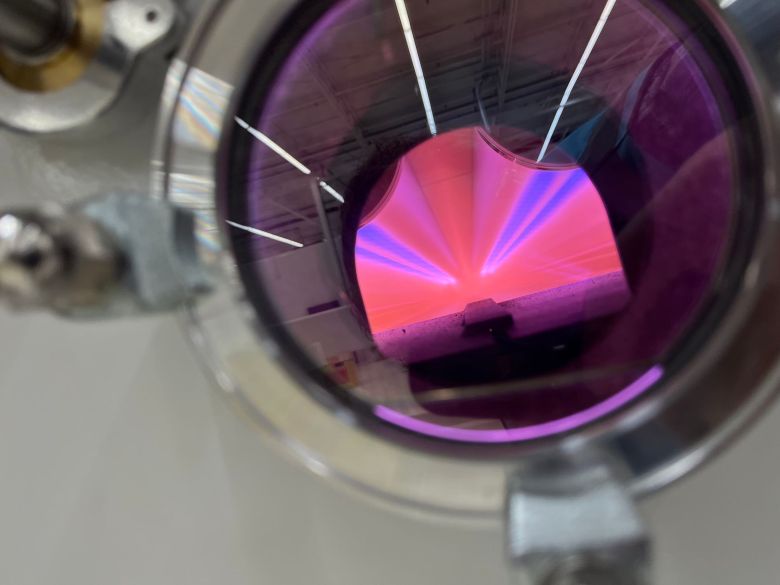
The transparent, ultra-thin coating blocks select infrared wavelengths, keeping heat out of a building or vehicle in the summer, or keeping it in during the winter. Upgrading windows this way could cut a house’s energy use by 40 percent, Nunez-Reguiero said. Better energy efficiency is an essential component of decarbonizing home heating and cooling, a major goal of both the Michigan climate plan and the Inflation Reduction Act.
Nxlite had the good fortune to move into a fully built and equipped glass factory. Like Our Next Energy, the startup is running pilot operations now before scaling up to full commercial production.
Over in Litchfield, about 100 miles west of Detroit, Whitmer had celebrated the early August opening of LuxWall, which fabricates gas-insulated window panes, another tool for decreasing building energy consumption. The company called this factory “the world’s first high-volume vacuum-insulating glass production facilities,” and announced plans to invest far more money in growing its operations in Michigan. LuxWall employs 87 people now but plans to eventually employ 450, aided by $6 million in state grants and over $31 million in federal money.
And last year, Michigan leaders were proud to close a $400 million factory commitment from Nel, a Norwegian company that makes high-tech electrolyzers for turning clean electricity into hydrogen. Electrolyzers could soon become the picks and shovels of the clean hydrogen gold rush, which promises to decarbonize tricky sectors like long-distance shipping and freight, steelmaking, and chemicals.
Michigan leaders hustled to make it happen. “It came down to two states — I’m not going to name the second state, but the governor of the second state said, ‘Hey, I’m too busy,’” Quentin Messer, CEO of the Michigan Economic Development Corporation, recounted from his office in Lansing. “And Gov. Whitmer said, ‘Look, this is an opportunity. This is my responsibility, as leader of the state, to be closer-in-chief.’”
Whitmer flew out to Oslo herself and sealed the deal. Messer said it ended up being the largest foreign direct investment announced at the 2023 SelectUSA Investment Summit, the Department of Commerce’s annual conference to facilitate foreign investment in the U.S. economy.
That factory, though, hasn’t broken ground yet — one of many projects held up until the Internal Revenue Service decides how to structure its hydrogen tax credits.
Other manufacturers have operated in Michigan’s industrial landscape for decades, but added new lines in response to new federal and state incentives. Up in Saginaw, Hemlock Semiconductor has for years produced among the highest-grade polysilicon in the country. After Congress passed policies to encourage onshoring of microchip production and the solar supply chain, Hemlock broke ground on a $375 million expansion in October 2022.
Armstrong International’s history in the state dates back even further than Hemlock’s. In 1900, Adam Armstrong answered a newspaper ad offering free land and a building in Three Rivers, a farm town nestled among the cornfields south of Kalamazoo, to any company that could hire 15 people over five years. He relocated his machine shop from Chicago, and got to work in a 40-by-100-foot building crafting bicycle spokes, potato diggers, and railroad repair buggies. His great-great-grandson, Kurt Armstrong, told me the company no longer makes potato diggers, but the inverted bucket steam trap it commercialized in 1911 kicked off a thriving business in industrial thermal equipment that now spans 20 factories and offices worldwide.
Armstrong recently started construction on a 29,000-square-foot expansion in Three Rivers to produce industrial-grade heat pumps within 12 months, funded in part by the U.S. Department of Energy. The company’s design captures heat in industrial facilities that would otherwise escape as waste, and concentrates it to recirculate into factory processes. It plays in the range of 150 to 200 degrees Celsius, assisting tasks like drying out pet food, distilling bourbon, pasteurizing soft drinks, and operating commercial-scale laundries.
Armstrong said the factory addition will employ 10 to 15 people to start, and that could grow based on demand.
“The reason why we stayed in that Michigan location is because there’s such a deep tie-in to the culture and community there,” Armstrong told me. “It’s the employees who make the company great, and you can’t just recreate that somewhere else.”
Armstrong’s expansion is a lot smaller than a multi-billion-dollar battery factory, but it’s bigger than a multi-billion-dollar battery factory that doesn’t yet exist. Michigan’s big-ticket factory commitments drive up the counts of dollars invested and jobs created, but they also require more diligence and risk assessment from their corporate backers, not to mention longer construction times. Meanwhile, the smaller-dollar expansions are putting people to work building tools most people have never heard of, but which serve the climate transition in tangible ways.
Michigan’s clean energy factories are slowly materializing, but the best is yet to come — assuming the underlying policies to support battery and solar manufacturing remain in effect. Michiganders are uniquely positioned to influence that outcome, by voting in a crucial swing state this November.
One of the big questions facing Democrats broadly in 2024 is whether their efforts to reinvigorate American industry will resonate with voters concerned about the nation’s economic outlook. When Joe Biden was the candidate, swing-state voters weren’t swayed. But the arrival of Harris on the ticket turned states that looked all but lost into toss-ups again. That creates room for a clean energy message to make a difference: Persuading tens of thousands of voters to support a domestic economic platform is more doable than swaying millions.
Measuring voters’ receptiveness to clean energy onshoring is tough to do, especially when, as in Michigan, the most exciting factories aren’t yet boosting local tax revenues and putting thousands of people to work in high-tech jobs. I wasn’t able to find a northern analogue to Dalton, Georgia, where an existing Qcells solar-panel factory used IRA incentives to rapidly grow to 2,000 full-time workers, and the benefits are already cascading across the city.
But Michigan brings two things to the effort that are hard to find together in the other states leading the factory boom: a fired-up state Democratic establishment that’s running on climate action and related jobs, and a newly galvanized union base.
Many of the top winners in clean energy manufacturing dollars have been states led by Republican governors or legislatures, who like the jobs but not the Democrats’ broader policy agenda — places like Georgia, North Carolina, South Carolina, and Ohio.
Michigan, on the other hand, has a deep bench of liberal state leaders who ran on climate last cycle and won a historic majority.
“The governor had talked about it quite a bit before the election, and had worked with people across the state to develop the Michigan climate action plan,” state Senator Sue Shink, a Democrat from the Ann Arbor area, told Canary Media. “It had all the policies we [ultimately] enacted laid out in it, and talked about pathways to attaining those goals.”
After winning the statehouse, Whitmer and her allies passed a series of high-profile climate policies last year. Michigan committed to produce carbon-free electricity not by 2045, like California and New York, but by 2040. Other laws added labor standards and energy-justice provisions to the clean energy buildout, and created a Community and Worker Economic Transition Office to look out for the workforce amid the shifts to lower-carbon industry.
Knocking on doors for the 2022 election, Shink found that climate and clean energy were on voters’ minds. Weather fluctuations had messed with farmers’ planting schedules. Huge rainstorms had overwhelmed aging infrastructure and flooded homes. The 100-year-old Edenville Dam burst in May 2020. Diminished snowfall had been curtailing the cherished ski season.
While seeking to address carbon emissions, the politicians kept their focus on “making sure the quality of life in Michigan is as good as it can be,” Shink said.
Residents in her district, for instance, struggled with under-insulated homes, which drive up heating and cooling bills. The state laws created programs to take advantage of federal weatherization funds from the IRA, and “it’s making a huge difference in their lives, because they’re warmer, their house is more comfortable,” Shink said. This approach tracks neatly with how progressive data crunchers have advised Democrats to describe the massive and complex Inflation Reduction Act to voters.
Now Michigan Democrats have a package of legislative achievements to run on in November, which happens to complement the principal policy achievements of Harris’ vice presidency. In fact, Michigan politicians are pushing the Harris campaign to speak up more on the domestic manufacturing push, which Biden prioritized in his campaigning, per a recent Politico article. (Neither the Harris campaign nor the Trump campaign responded to Canary Media’s requests for comment for this article.)
Michigan also has another ascendant political force at work: unions.
Much of the country’s recent EV and battery factory investment has gone to Southeastern states, which attract companies with their “business-friendly environment” that includes decades of undercutting the power of organized labor. But unions have played a defining role in Detroit since Henry Ford, after some convincing, recognized the United Auto Workers in 1941.
Democratic state officials are vocally supportive of Michigan’s union heritage.
“We benefit a lot from the fact that we’ve had the UAW, IBEW, and others investing in workforce and helping with workforce training,” said Smith from the state Department of Labor and Economic Opportunity. “I think most employers recognize that’s an asset to them and an asset to the state, not necessarily something that’s going to be a threat to their business model.”
Shawn Fain won the presidency of the UAW last year by running as a reform candidate who wanted to clean up after a string of corruption scandals took down leaders of the union’s long-reigning faction. He proceeded to rally the biggest autoworker strike in decades, and win concessions from the Big Three, including a clear pathway for workers to unionize at battery plants. The UAW has since organized workers at two Ultium battery plants, in Lordstown, Ohio, and Spring Hill, Tennessee, winning wage increases and other benefits.
Joe Biden became the first U.S. president to appear on a picket line last year when he joined Fain at a GM plant near Detroit. Fain later appeared at the Democratic National Convention in Chicago in August and rallied behind Harris, countering Trump’s recent outreach to working-class voters by labeling him a “scab.”
If winning begets more winning, the political mobilization that’s starting to generate clean energy jobs in Michigan will be an asset for Democrats at the polls in November, something that wasn’t there in 2016 or 2020. If these forces keep Michigan in the Democratic column, that could help ensure the clean industrial policies stay on the books in Washington, giving Michigan’s factories more time to overcome headwinds and deliver on their promises of jobs and community revitalization.
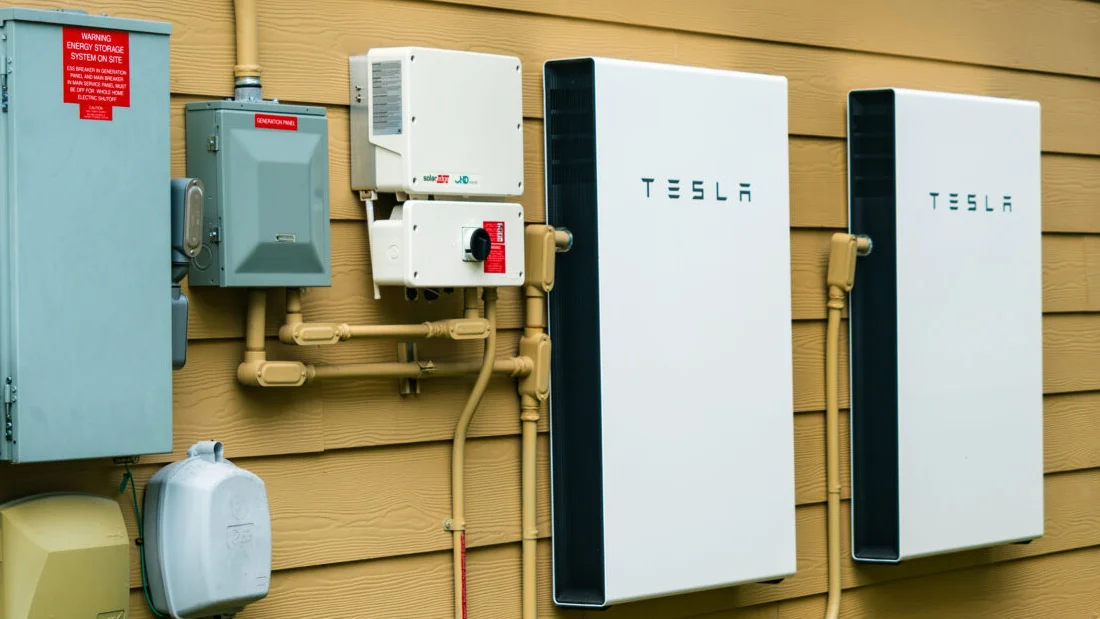
From the World Economic Forum to utility industry magazines to the US Department of Energy, in recent years there’s been a growing refrain: how batteries can enable a net-zero electricity grid. Implicit in that statement is the idea that batteries can (and should) help lower grid emissions, increase the integration of zero-emissions renewable energy sources, and support overall power sector decarbonization. Yet battery energy storage is sometimes finding itself in the hot seat for exactly the opposite reason.
Earlier this year, a University of Michigan study focused on the PJM market (the large regional transmission organization covering all or part of 13 U.S. states plus Washington, D.C.) found that batteries sometimes increased grid emissions. While the U-M study was based on older data (from 2012 to 2014), its takeaways echo concerns we’ve heard before.
In the early 2010s, California’s Self-Generation Incentive Program (SGIP) — a major driver of the state’s behind-the-meter battery energy storage market — shifted its focus to specifically prioritize greenhouse gas reductions for the Golden State’s power grid. But then circa 2018 and 2019, analysis found that batteries were often increasing, rather than decreasing, grid emissions.
For the better part of a decade, batteries have been described as a Swiss Army knife of the power grid, capable of performing myriad functions — from customer-centric services such as backup power, peak shaving, solar self-consumption, and time-of-use energy arbitrage to grid-centric services such as frequency and voltage regulation, demand response, and mitigating renewables curtailment.
Ultimately, doing all of that involves software algorithms that dictate when a battery energy storage system charges and discharges. Those algorithms typically co-optimize around various price signals. But it’s the marginal emissions of the power grid at the times a battery is charging vs. discharging that determines whether the battery causes a net decrease (or increase) in grid emissions.
Unless energy storage considers emissions in their control approach, there’s no guarantee that they’ll help decarbonize power grids. Energy journalist David Roberts summed it up well: “It’s a mistake to deploy batteries … as though they will inevitably reduce emissions. They’re a grid tech, not a decarbonization tech,” more akin to transmission lines that can equally carry dirty or clean power, agnostic to the electricity’s generation source and the associated carbon emissions. So, too, with batteries in the absence of the right signals.
To address the emissions increase caused by energy storage participating in SGIP, the rules of the program were revised with the goal of enabling the state’s participating behind-the-meter commercial and residential batteries to live up to their emissions-reducing promise. Almost immediately after the rule change, we started to see positive outcomes. A detailed impact evaluation published earlier this year by CPUC with analysis by Verdant gives a longer-term view of SGIP’s turnaround story.
Between 2018 and 2022 (the period covered by Verdant’s analysis), battery systems in California’s SGIP fully reversed course, flipping from causing a net increase in grid emissions to causing a significant net decrease in a resounding decarbonization success.
Now, energy storage has cemented its central role supporting California’s goal of achieving 100% carbon-free electricity by 2045. The state boasts more than 10 GW of installed battery capacity, and earlier this year, batteries became the single largest contributor to the state’s grid briefly during the evening peak. Grid-scale batteries charged on excess daytime solar are starting to displace natural gas power plants. And during this year’s solar eclipse, batteries charged on excess renewable energy carried California’s power sector through the temporary slump in solar PV generation.

California may be the country’s most-prominent example, but it’s hardly the only US state setting combinations of both emissions-reduction / net-zero emissions targets as well as energy storage goals. For just four examples, Connecticut, Massachusetts, New Jersey, and New York — all members of the Regional Greenhouse Gas Initiative (RGGI) — each have robust energy storage targets tied to 100% clean energy and GHG reduction goals. So does Michigan.
For energy storage to help these and other states achieve their clean energy goals, it will be crucial to learn from California’s SGIP growing pains — and using a true marginal emissions GHG signal, rather than a proxy metric, to inform batteries’ duty cycles. Just look at what has transpired in Texas and the ERCOT market.
The Lone Star State has been called “the hottest grid battery market in the country.” But analysis from Tierra Climate published in June 2024 in collaboration with REsurety, Grid Status, Modo Energy, and WattTime found that 92% of batteries in ERCOT increased grid emissions in 2023. This is largely because those batteries are not co-optimizing their operation in coordination with a carbon signal like SGIP’s GHG signal. That same report found that co-optimization with a carbon signal (or a carbon price) would move these battery energy storage assets from carbon increasing to carbon decreasing.
The US energy storage market is growing fast, with record-setting capacity additions in Q1 2024 and a staggering 75 GW of cumulative new capacity forecasted to come online during the period 2024–2028. If battery energy storage is to continue living up to its promise of enabling a net-zero grid, it’s more important than ever that state policies and battery control algorithms include a marginal emissions signal as part of their intelligence under the hood.

OFFSHORE WIND: A newly completed, $42 million commercial port on the New Bedford, Massachusetts waterfront could host offshore wind operations. (Cape Cod Times)
ALSO:
FOSSIL FUELS: A Philadelphia refinery agrees to pay a settlement of $4.2 million, after the U.S. EPA found the owners failed to remedy corrosion that caused an explosion and fire in 2019. (Associated Press)
ELECTRIC VEHICLES: New York is one of 40 cities in which ride-sharing option Uber Green will go fully electric, removing hybrid vehicles from its lineup. (NBC New York)`
AGRIVOLTAICS:
UTILITIES: FirstEnergy — a utility serving New Jersey, Maryland, and Pennsylvania — receives poor marks in a new Sierra Club report tracking utilities’ progress toward decarbonization. (Canary Media)
EQUITY: Energy efficiency contractors in Connecticut call on the state and private companies to improve the treatment of workers of color in the industry. (CT News Junkie)
NUCLEAR: A Maryland startup raises $45 million for its plan to build modular nuclear reactors at shipyards using existing labor and infrastructure. (DCInno, subscription)
RENEWABLES: The New York State Power Authority releases a draft plan identifying potential renewables projects across the state totaling as much as 3.5 GW of capacity. (news release)
TRANSIT: A new study recommends reviving a little-used rail line in Boston and adding electric train service to make commuting easier and attract more riders. (CommonWealth Beacon)
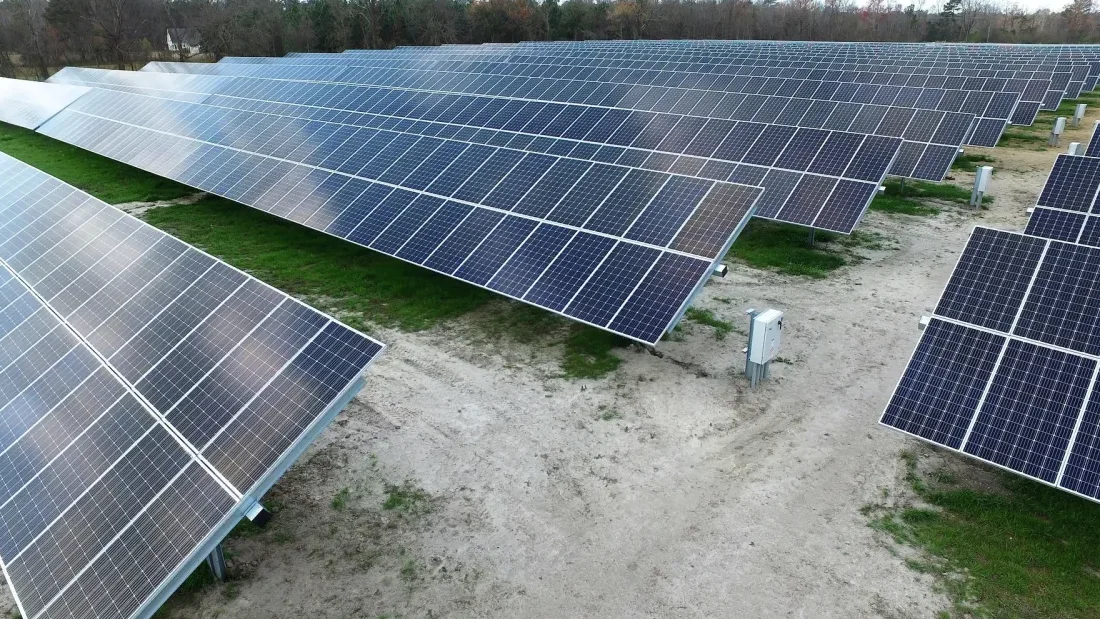
SOLAR: Hurricane Helene’s damage to a North Carolina town home to the purest quartz in the world highlights the solar industry’s precarious reliance on materials produced from a single location, especially in the face of escalating weather disasters. (Grist)
ALSO:
ELECTRIC VEHICLES: Hyundai begins producing electric SUVs at its new, $7.6 billion Georgia factory ahead of a grand opening planned for 2025. (Associated Press)
GRID:
ENVIRONMENTAL JUSTICE: A federal court hears arguments in a lawsuit by Louisiana community groups alleging a parish government “intentionally discriminated against Black residents” by placing polluting industrial facilities near majority-Black communities. (Associated Press)
OIL & GAS: A Houston-based pipeline company heads up emergency response to a 100-foot oil-laced saltwater geyser that erupted in a part of Texas that’s experienced a recent rash of earthquakes linked to wastewater injection. (Houston Chronicle)
CARBON CAPTURE: Texans testify to U.S. EPA officials about a planned carbon dioxide injection site in the Permian Basin that would be part of the largest direct air capture facility in the U.S. (Texas Tribune)
HYDROPOWER:
NUCLEAR: The U.S. Supreme Court agrees to review a ruling in a dispute over a company’s plans to store nuclear waste at a dump located in Texas’ Permian Basin. (Houston Chronicle)
UTILITIES: Texas Lt. Gov. Dan Patrick calls for the resignation of CenterPoint Energy’s CEO due to the utility’s botched response to power outages in Houston caused by Hurricane Beryl. (Houston Chronicle)
COMMENTARY:

NUCLEAR: Federal officials finalize a $1.52 billion loan to restart a southwestern Michigan nuclear plant, which has now secured $3.1 billion in subsidies to be the first shuttered U.S. nuclear plant to restart. (Bridge)
ALSO: The AI boom has left big tech companies scrambling to find large amounts of low-carbon energy to power data centers, creating new demand for nuclear power. (Mother Jones)
GRID:
WIND: Wind turbine service technician is projected to be the fastest growing occupation in South Dakota through 2032, according to state labor officials. (South Dakota Searchlight)
SOLAR:
OIL & GAS: North Dakota regulators approve plans for a $3.2 billion plant that would convert natural gas into diesel fuel and lubricants. (North Dakota Monitor)
CLIMATE:
ELECTRIC VEHICLES: Ford will start offering customers who buy or lease an electric vehicle a free home charger and installation in an effort to relieve range anxiety. (Detroit Free Press)

NUCLEAR: The Energy Department approves a $1.52 billion loan guarantee to restart the closed Palisades nuclear plant in Michigan, part of a resurgence of interest in nuclear power in the U.S. (New York Times)
ALSO: The AI boom has left big tech companies scrambling to find large amounts of low-carbon energy to power data centers, creating new demand for nuclear power. (Mother Jones)
NATURAL GAS:
CLIMATE: Environmental advocates are skeptical of a federal effort to establish guidelines for voluntary carbon markets. (Grist)
ELECTRIC VEHICLES:
ELECTRIFICATION:
WIND:
GEOTHERMAL: The U.S. House last week passed a bipartisan bill that aims to speed up approval for geothermal projects. (Think Geothermal)
POLITICS: Climate change is rarely acknowledged by either candidates in a hotly contested U.S. Senate race in Ohio, where some communities are experiencing new clean energy investments under the Inflation Reduction Act. (Inside Climate News)
COMMENTARY: A columnist describes a “tragedy of errors” that has led to the U.S. falling behind China in the race to lead on solar technology. (Bloomberg)

Residents with heat pumps in four Massachusetts towns will soon pay hundreds of dollars less for their electricity over the winter, thanks to a new pricing approach advocates hope will become a model for utilities across the state.
State regulators in June approved a plan by utility Unitil to lower the distribution portion of the electric rate from November to April for customers who use heat pumps, the first time this pricing structure will be used in the state. It’s a shift the company hopes will make it more financially feasible for residents of its service area to choose the higher-efficiency, lower-emissions heat source.
“We asked, is there a way we can structure the rates that would be fair and help customers adopt a heat pump?” said Unitil spokesman Alec O‘Meara. “We recognize that energy affordability is very important to our customers.”
Electric heat pumps are a major part of Massachusetts’ strategy for reaching its goal of going carbon-neutral by 2050. Today, nearly 80% of homes in the state use natural gas, oil, or another fossil fuel for space heating. Looking to upend that ratio, the state has set a target of having heat pumps in 500,000 homes by 2030.
One of the major obstacles to this goal is cost. To address part of this barrier, Massachusetts offers rebates of up to $16,000 for income-qualified homeowners and $10,000 for higher-income residents for heat pump equipment.
The cost of powering these systems though, can be its own problem. Natural gas prices have been trending precipitously downward for the past two years and Massachusetts has long had some of the highest electricity prices in the country. This disparity can be particularly stark in the winter, when consumers using natural gas for heating get priority, requiring the grid to lean more heavily on dirtier, more expensive oil- and coal-fueled power plants, said Kyle Murray, Massachusetts program director for climate and energy nonprofit Acadia Center.
So switching from natural gas to an electric heat source — even a more efficient one like a heat pump — doesn’t always mean savings for a consumer, especially those with lower incomes.
“Electric rates are disproportionately higher than gas rates in the region,” Murray said.
Unitil’s new winter pricing structure is an attempt to rebalance that equation. In New England, electric load on the grid is generally much lower in the winter, when people turn off their air conditioners and switch over to gas or oil heating. That means that the grid, built to accommodate summer’s peak demand, has plenty of capacity for the added load of new heat pumps coming online — no new infrastructure needs to be built to handle this demand (for now, at least).
“The marginal cost of adding demand is lower,” said Mark Kresowik, senior policy director at American Council for an Energy-Efficient Economy, which supports heat pump-specific rates.
Unitil, which provides electricity to 108,500 households, decided to let customers share in that lower marginal cost. The company estimates customers will save about six cents per kilowatt-hour, which would work out to a monthly savings of more than $100 for a home using about 2,000 kilowatt-hours per month. The new rate should go into effect in early 2025, O’Meara said.
As Unitil is preparing to deploy its heat pump rate, environmental advocates and other stakeholders are pushing for adoption of this strategy beyond Unitil’s relatively limited territory.
Public utilities regulators are in the middle of considering a rate case filed by National Grid, which serves some 1.3 million customers in Massachusetts. National Grid has proposed what it calls a technology-neutral “electrification rate,” which would provide discounts to certain high-volume energy users, which would include heat pump users.
However, several advocates for low-income households and clean energy — including Acadia Center, Conservation Law Foundation, Environmental Defense Fund, Low-Income Energy Affordability Network — as well as the state energy department and Attorney General Andrea Campbell argue that this approach is inadequate. They’ve submitted comments urging regulators to require National Grid to offer a heat pump rate similar to Unitil’s plan, but modified to work within National Grid’s pricing model.
“Every intervenor in the docket who commented on the electrification proposal in any capacity was negative on it,” Murray said. “And the [department of public utilities] in its questioning seemed fairly skeptical as well.”
National Grid declined to comment on the pending rate case.
The electrification rate, opponents argue, would lower costs not just for households with heat pumps, but also for those with inefficient electric resistance heating and even heated pools, effectively running counter to the goal of reducing greenhouse gas emissions.
“The ‘electrification’ proposal would apply to all electricity consumption, whether or not consistent with the Commonwealth’s climate policy of reducing greenhouse gases,” said Jerrold Oppenheim, a lawyer for the Low-Income Weatherization and Fuel Assistance Program Network and the Low-Income Energy Affordability Network.
It would also do nothing to encourage heat pump adoption among low- and moderate-income households, they say: Some 48% of low-income customers interested in switching to a heat pump would actually see bill increases of up to 33%, according to a brief filed by Oppenheim for the network.
Beyond the National Grid rate case, other stakeholders are also pushing for seasonal heat pump rates. The state has convened an Interagency Rates Working Group to study and make recommendations on the challenges of changing how electric rates are designed to encourage electrification of home heating and adoption of electric vehicles. In August the group released an analysis that found seasonal rates created significant savings for homes with heat pumps.
“They came to the same conclusion, that this is the right approach,” Kresowik said.
Eventually, the introduction of advanced metering technology will simplify the process of applying lower rates to desired uses, like heat pumps and electric vehicles. But the full deployment of these systems is still several years in the future, and action to ease adoption of heat pumps must be taken much sooner, advocates argue.
In the meantime, many have expressed some optimism that regulators will require National Grid to make its electrification proposal more responsive to the state’s climate and equity priorities.
“I would be surprised if the electrification pricing proposal exists as is in the final [regulatory] order,” Murray said.
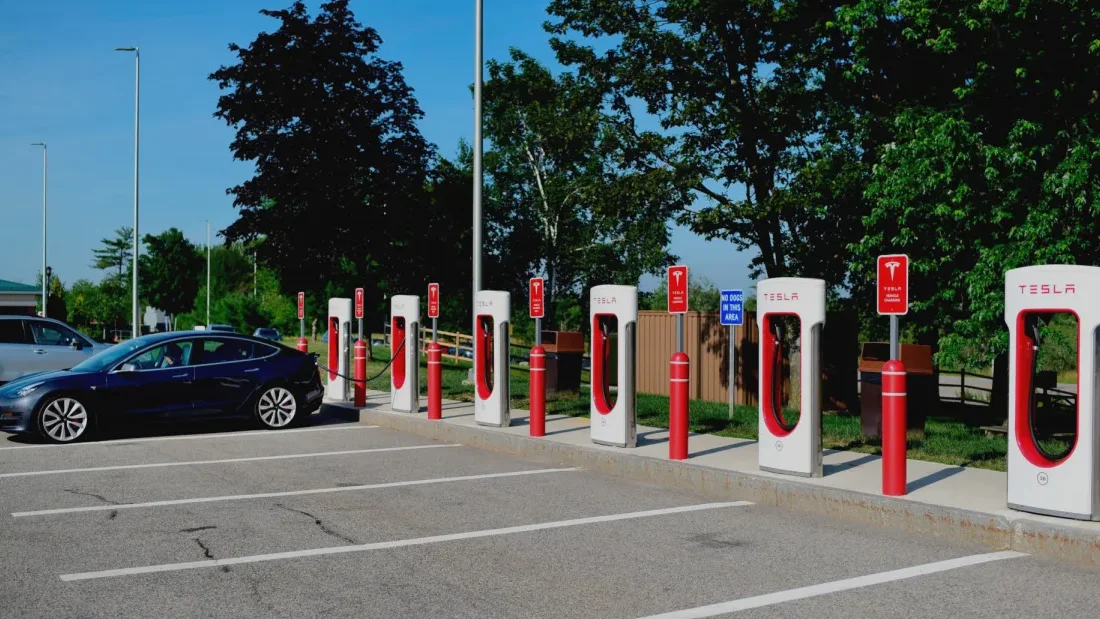
CLEAN ENERGY:
ALSO: Despite ongoing critiques from Sen. JD Vance, the Inflation Reduction Act has benefited Ohio residents, including in his hometown of Middletown, with new clean energy investments. (New York Times)
UTILITIES: Xcel Energy spent more on lobbying state lawmakers than any other organization in Minnesota last year, when lobbying spending ballooned 18% from 2022. (Minnesota Reformer)
RENEWABLES: While wind and solar made up 64% of Iowa’s electricity generation last year, the state needs to speed up efforts to transition from coal to meet climate change targets, a statewide environmental group reports. (Radio Iowa)
GRID:
NUCLEAR: A resolution is near in a yearslong tax dispute over the value of a Michigan nuclear plant, which could result in a roughly $4.3 million cut in tax revenue for local schools and governments next year. (MLive)
SOLAR: A southern Indiana farmer says a proposed 2,050-acre solar project around his land would look like an “industrial wasteland,” while others see an opportunity to generate revenue for their farm. (WHAS)
BIOMASS: The University of Iowa is leaning heavily on various biomass crops for power generation as it continues plans to phase out coal by next year. (Daily Iowan)
CARBON CAPTURE: A carbon capture demonstration project at a large North Dakota coal plant receives a $4.1 million grant as part of hundreds of millions of dollars in federal support expected for the project. (Power Magazine)
OIL & GAS: The Ohio Court of Appeals denies the state attorney general’s request to hear a case seeking to hold a gas pipeline company responsible for discharging millions of gallons of drilling liquids into wetlands. (Bloomberg Law, subscription)

OFFSHORE WIND: In a major milestone, the U.S. Bureau of Ocean Energy Management approves New Jersey’s first offshore wind project, though opponents have vowed to keep fighting the development. (Associated Press)
ALSO: Officials in New Bedford, Massachusetts, vote to amend zoning regulations to clear the way for more construction at a marine terminal intended to serve the offshore wind industry. (New Bedford Standard-Times)
ELECTRIFICATION: Massachusetts regulators order National Grid to create a seasonal discounted rate for households with heat pumps, months after approving a similar plan by another utility. (Energy News Network)
SOLAR
NUCLEAR:
CONSUMER PROTECTION: Big energy companies in Maryland argue that a law intended to protect consumers from predatory energy suppliers will limit their ability to market their renewable energy products, hurting their business and slowing the state’s progress toward its climate goals. (Maryland Matters)
ELECTRIC VEHICLES: A Massachusetts startup unveils a new, slow electric vehicle charger in Concord, New Hampshire, testing the idea that the less-expensive equipment can help expand charging infrastructure in places where cars remain parked for several hours. (Concord Monitor)
HYDROGEN: A Massachusetts company claims its equipment can make hydrogen at greater scale, using methods that produce fewer greenhouse gas emissions than the traditional process. (MIT Technology Review)
BUILDINGS:
ELECTRIFICATION: Two of the world’s largest building materials companies invest $75 million in a Massachusetts company that makes cement using an electric current instead of emissions-intensive fossil-fueled kilns. (Canary Media)